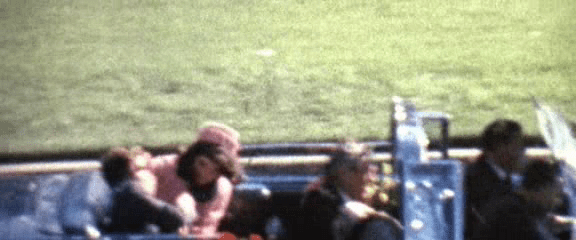This is my latest contribution to The Big Picture, the internationally-recognised magazine and website that offers an intelligent take on cinema, focussing on how film affects our lives. This piece is part of the Four Frames section, wherein the importance of four significant shots are discussed, in this case from Oliver Stone’s conspiracy epic JFK.
Jean-Luc Godard once said that “the cinema is truth 24 times a second … and every cut is a lie”.
The silent, grainy footage shot by Abraham Zapruder on November 22, 1963 as US President John F Kennedy’s motorcade passed through Dealey Plaza in Dallas lasts less than 30 seconds, features no cuts, and provides the ‘truth’ a conspiracy took place to assassinate JFK, according to New Orleans District Attorney Jim Garrison (Kevin Costner) and, in turn, director Oliver Stone.
Stone’s sprawling, dissentious and riveting passion project remains as fascinating today as on its release almost 25 years ago and has come under the spotlight once again in light of the 50th anniversary of JFK’s murder.
Equal parts conspiracy thriller, murder mystery and procedural, the film’s final act is given over to courtroom drama as Garrison goes to trial to expose New Orleans businessman Clay Shaw’s (Tommy Lee Jones) involvement in a plot to kill Kennedy; although it soon becomes apparent he’s more concerned with proving that a shadowy cabal of the ‘military-industrial complex’, Mafia, CIA, FBI and Secret Service staged a coup d’état by assassinating the president.
In a bravura sequence, masterfully edited and underpinned by John Williams’ iconic score, Garrison/Stone use the Zapruder film to shoot down the so-called ‘magic bullet theory’ and prove Lee Harvey Oswald was a patsy by implying there were three gunmen in Dealey Plaza that day, one of whom was positioned on a grassy knoll and took the kill shot, causing Kennedy’s head to snap “back … and to the left”. Just in case it doesn’t sink in, Garrison methodically repeats the phrase over a loop of Zapruder’s fateful footage.
Costner, whose “Crash” Davies had declared Oswald to be the lone gunman in Bull Durham two years earlier, amps up the tub-thumping righteousness when he posits that America has surrendered to an Orwellian nightmare wherein truth has been murdered by fascism before finally breaking the fourth wall and declaring “it’s up to you”.
The film sparked a new wave of conspiracy-fuelled movies and TV series that declared the truth was out there, 24 times a second or otherwise.
Whether you believe Stone’s labyrinthine vision or not is ultimately irrelevant; JFK is a sensory-shredding descent down the rabbit hole and a primal scream from one of cinema’s most unique voices.





Great post. I know Stone gets a lot of criticism for JFK but I absolutely love the movie. The courtroom scene is so incredibly effective and there’s not a scene in the picture that isn’t thrilling.
Thanks very much. I must have seen it about a dozen times and it remains one of my all-time favourite films.
Nice work Mark. I don’t care for the criticism that JFK took. I think it’s one of Stone’s best films. It’s an outstanding piece of work.
Great piece Mark. There’s loads of stuff about around JFK again now and it’s still absolutely fascinating.
Great post – enjoyed reading detailed analysis of the scene. Haven’t seen it in a long time.